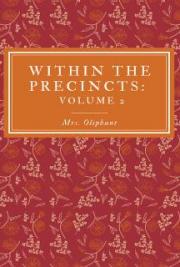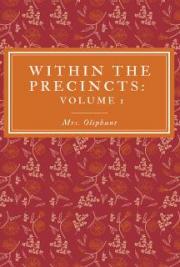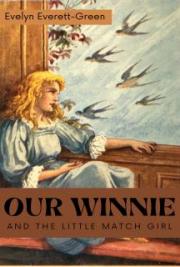AUTHORITIES
A novelist is not usually asked, like a historian, for his ‘Quellen’. As I have, however, judging from certain experiences in the past, some reason to anticipate such a demand, I wish to acknowledge my indebtedness to Mr Thomson’s admirable history of travel ‘Through Masai Land’ for much information as to the habits and customs of the tribes inhabiting that portion of the East Coast, and the country where they live; also to my brother, John G. Haggard, RN, HBM’s consul at Madagascar, and formerly consul at Lamu, for many details furnished by him of the mode of life and war of those engaging people the Masai; also to my sister-in-law, Mrs John Haggard, who kindly put the lines of p. 183 into rhyme for me; also to an extract in a review from some book of travel of which I cannot recollect the name, to which I owe the idea of the great crabs in the valley of the subterranean river. {Endnote 23} But if I remember right, the crabs in the book when irritated projected their eyes quite out of their heads. I regret that I was not able to ‘plagiarize’ this effect, but I felt that, although crabs may, and doubtless do, behave thus in real life, in romance they ‘will not do so.’
There is an underground river in ‘Peter Wilkins’, but at the time of writing the foregoing pages I had not read that quaint but entertaining work.
It has been pointed out to me that there exists a similarity between the scene of Umslopogaas frightening Alphonse with his axe and a scene in Far from the Madding Crowd. I regret this coincidence, and believe that the talented author of that work will not be inclined to accuse me of literary immorality on its account.
Finally, I may say that Mr Quatermain’s little Frenchman appears to belong to the same class of beings as those English ladies whose long yellow teeth and feet of enormous size excite our hearty amusement in the pages of the illustrated Gallic press.
The Writer of ‘Allan Quatermain’
Endnote 1
Among the Zulus a man assumes the ring, which is made of a species of black gum twisted in with the hair, and polished a brilliant black, when he has reached a certain dignity and age, or is the husband of a sufficient number of wives. Till he is in a position to wear a ring he is looked on as a boy, though he may be thirty-five years of age, or even more.—A. Q.
Endnote 2
One of the fleetest of the African antelopes.—A. Q.
Endnote 3
Alluding to the Zulu custom of opening the stomach of a dead foe. They have a superstition that, if this is not done, as the body of their enemy swells up so will the bodies of those who killed him swell up.—A. Q.
Endnote 4
No doubt this owl was a wingless bird. I afterwards learnt that the hooting of an owl is a favourite signal among the Masai tribes.—A. Q.
Endnote 5
Since I saw the above I have examined hundreds of these swords, but have never been able to discover how the gold plates were inlaid in the fretwork. The armourers who make them in Zu-vendis bind themselves by oath not to reveal the secret.—A. Q.
Endnote 6
The Masai Elmoran or young warriors can own no property, so all the booty they may win in battle belongs to their fathers alone.—A. Q.
Endnote 7
As I think I have already said, one of Umslopogaas’s Zulu names was the ‘Woodpecker’. I could never make out why he was called so until I saw him in action with Inkosi-kaas, when I at once recognized the resemblance.—A. Q.
Endnote 8
By a sad coincidence, since the above was written by Mr Quatermain, the Masai have, in April 1886, massacred a missionary and his wife—Mr and Mrs Houghton—on this very Tana River, and at the spot described. These are, I believe, the first white people who are known to have fallen victims to this cruel tribe.—Editor.
Endnote 9
Mr Allan Quatermain misquotes—Pleasure sat at the helm.—Editor.
Endnote 10
Where Alph the sacred river ran
Through caverns measureless to man
Down to a sunless sea
Endnote 11
Mr Quatermain does not seem to have been aware that it is common for animal-worshipping people to annually sacrifice the beasts they adore. See Herodotus, ii. 45.—Editor.
Endnote 12
There is another theory which might account for the origin of the Zu-Vendi which does not seem to have struck my friend Mr Quatermain and his companions, and that is, that they are descendants of the Phoenicians. The cradle of the Phoenician race is supposed to have been on the western shore of the Persian Gulf. Thence, as there is good evidence to show, they emigrated in two streams, one of which took possession of the shores of Palestine, while the other is supposed by savants to have immigrated down the coast of Eastern Africa where, near Mozambique, signs and remains of their occupation are not wanting. Indeed, it would have been very extraordinary if they did not, when leaving the Persian Gulf, make straight for the East Coast, seeing that the north-east monsoon blows for six months in the year dead in that direction, while for the other six months it blows back again. And, by the way of illustrating the probability, I may add that to this day a very extensive trade is carried on between the Persian Gulf and Lamu and other East African ports as far south as Madagascar, which is of course the ancient Ebony Isle of the ‘Arabian Nights’.—Editor.
Endnote 13
There are twenty-two letters in the Phoenician alphabet (see Appendix, Maspero’s Histoire ancienne des peuples de l’Orient, p. 746, etc.) Unfortunately Mr Quatermain gives us no specimen of the Zu-Vendi writing, but what he here states seems to go a long way towards substantiating the theory advanced in the note on p. 149.—Editor.
Endnote 14
These are internal measurements.—A. Q.
Endnote 15
Light was also admitted by sliding shutters under the eaves of the dome and in the roof.—A. Q.
Endnote 16
This line is interesting as being one of the few allusions to be found in the Zu-Vendi ritual to a vague divine essence independent of the material splendour of the orb they worship. ‘Taia’, the word used here, has a very indeterminate meaning, and signifies essence, vital principle, spirit, or even God.
Endnote 17
Alluding to the Zulu custom.—A. Q.
Endnote 18
In Zu-Vendis members of the Royal House can only be married by the High Priest or a formally appointed deputy.—A. Q.
Endnote 19
Alluding to the Zu-Vendi custom of carrying dead officers on a framework of spears.
Endnote 20
The Zu-Vendi people do not use bows.—A. Q.
Endnote 21
Of course, the roof of the Temple, being so high, caught the light some time before the breaking of the dawn.—A. Q.
Endnote 22
Of course the Court of Probate would allow nothing of the sort.—Editor.
Endnote 23
It is suggested to me that this book is The Cruise of the “Falcon”, with which work I am personally unacquainted.







